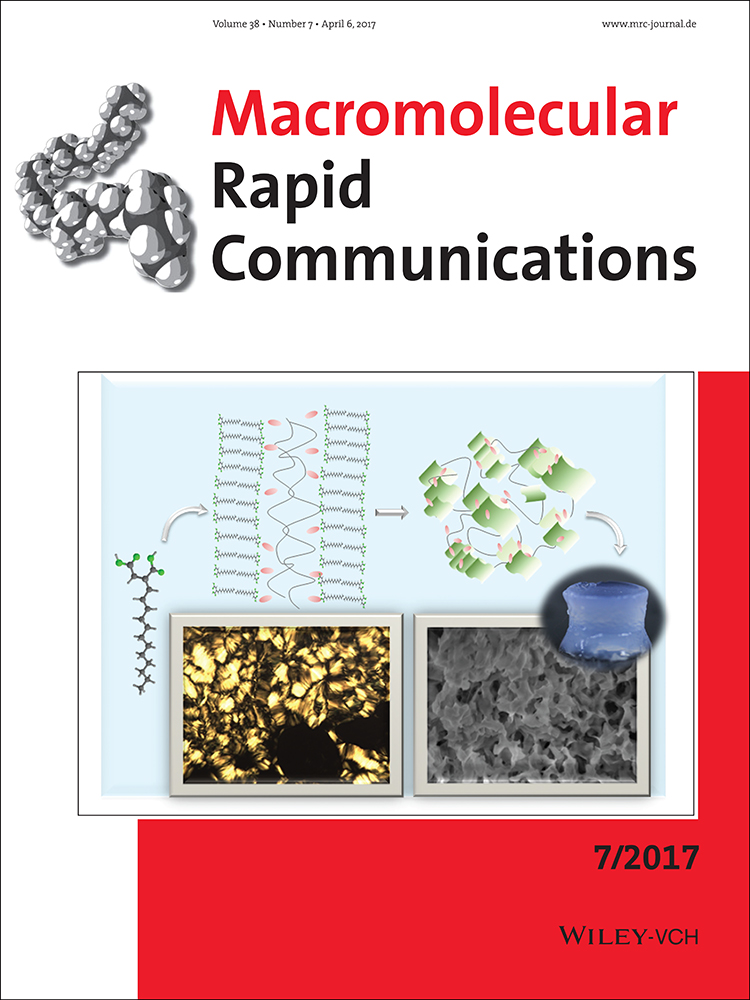Metallo-Polymer Chain Extension Controls the Morphology and Release Kinetics of Microparticles Composed of Terpyridine-Capped Polylactides and their Stereocomplexes
Abstract
Control over morphology and porosity of supramolecular complexed polylactide (PLA) microparticles can be achieved by manipulation of the supramolecular interactions between their constituent polymeric building blocks. It is expected that such modular systems are ideal candidates to serve as degradable delivery carriers. In view of this goal, this study reports about a modular fabrication of biodegradable microparticles from terpyridine (TPy) and bisterpyridine (bisTPy) end-functionalized PLAs that can be transiently extended by chain association through differently strong complexation to three metal cations: Ni2+, Co2+, or Fe2+. Further influence on the morphology of the particles can be exerted by hydrogen-bonding association of enantiomeric l- and d-PLA chains in the form of stereocomplexes. Both effects cause different stabilization of phase-separating TPy and bisTPy PLA micrograins in a process of droplet-based microfluidic particle templating, resulting in different forms of microparticle porosity. If the resulting particles are tailored such to be highly porous, they exhibit a faster release of a model drug, (S)-(+)-4-(3-amino-pyrrolidino)-7-nitrobenzo-furazan, than if they have smooth surfaces. As a result, control over the synthetic parameters, and hence, the particle porosity, can be used to tune the release profiles of drugs from the PLA microspheres.





